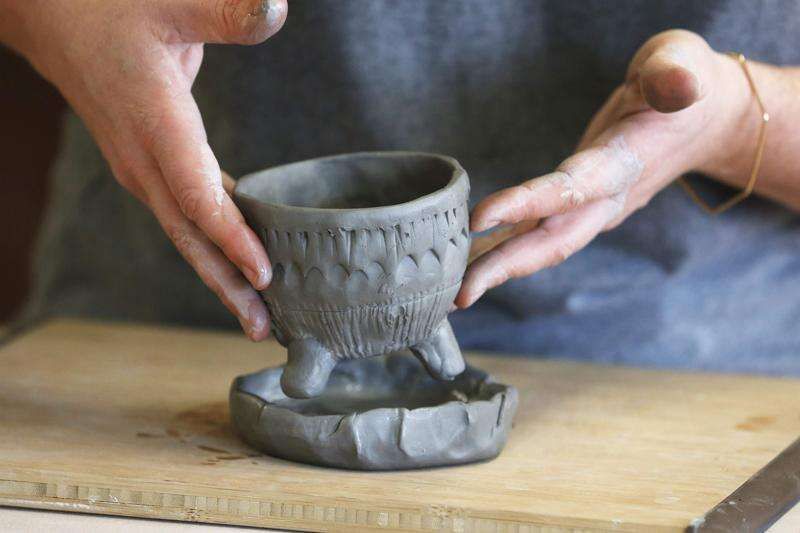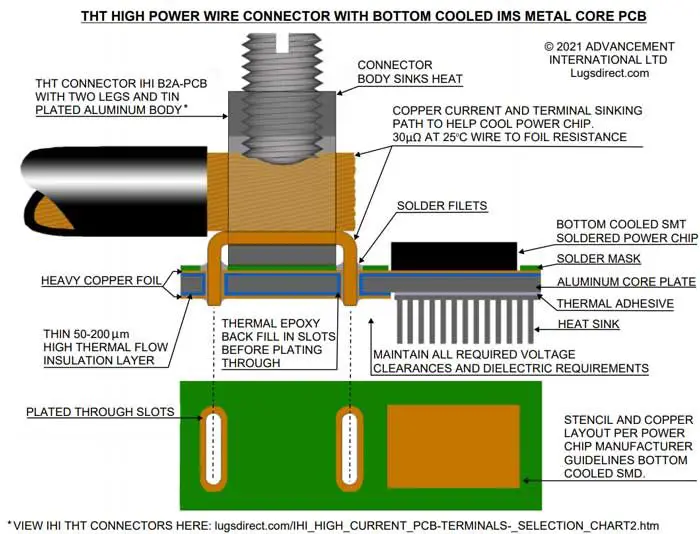Do You Need A Wheel For Ceramics?
Ceramics is the art and technology of making solid objects from inorganic or non-metallic materials that can be shaped and fired at high temperatures. The word “ceramic” comes from the Greek word keramos which means “potter’s clay” (https://dictionary.cambridge.org/us/dictionary/english/ceramics). Ceramics are made from clay and other natural materials that are shaped and hardened by exposure to high heat. The earliest ceramics were made from clay and dating back over 20,000 years ago.
Pottery is a type of ceramic material that is made from clay, shaped, fired at high temperatures, and can hold liquids. Pottery is one of the oldest human inventions, originating before the Neolithic period, with ceramic objects like the Gravettian culture dating back to 29,000–25,000 BCE. Pottery is made by forming a clay body into objects before firing them to harden the clay (https://www.collinsdictionary.com/us/dictionary/english/ceramics).
History of the Pottery Wheel
The pottery wheel is an ancient invention that revolutionized ceramic production. Evidence suggests the potter’s wheel first appeared around 3500 BCE in Mesopotamia (modern day Iraq). Before the wheel, pottery was made using coiling techniques, where long strands of clay were rolled by hand to form the shape. This was a slow and laborious process.
The invention of the wheel enabled a lump of clay to be quickly rotated against the potter’s hands to form symmetrical ceramic vessels. This sped up production exponentially. By 3000 BCE, wheel-made pottery had become universal in Mesopotamian cultures, diffusing from there to Egypt, the Eastern Mediterranean, and Europe (Source). The pottery wheel transformed ceramic making from a handcraft to a quickly produced trade good.
Types of Wheels
There are three main types of pottery wheels:
Kick Wheel
A kick wheel is a manual pottery wheel that must be spun by kicking a pedal with your foot continuously during throwing. This keeps the wheel head turning at a constant speed. Kick wheels are inexpensive and compact but require physical effort to keep moving.
Electric Wheel
Electric pottery wheels have an electric motor that rotates the wheel head at a consistent speed without manual effort. Speed is controlled with a foot pedal or knob. Electric wheels provide convenience and ease of use but are more expensive and bulky.
Treadle Wheel
Treadle wheels operate by pumping a treadle with your foot in a rocking motion. This powers the flywheel to spin the wheel head. Treadle wheels provide hands-free operation without electricity but are difficult to keep at a perfectly consistent speed.
Alternatives to the Wheel
While the pottery wheel is a staple tool for many ceramic artists, there are other techniques that can be used to create pottery without a wheel. Two of the most common alternatives are handbuilding and molding/casting.
Handbuilding involves constructing ceramic pieces by hand using techniques like pinch pots, coil building, and slab building. With practice, handbuilding allows artists to create a wide variety of forms including cups, vases, bowls, and sculptures. Some benefits of handbuilding are that it doesn’t require a wheel, gives the artist more direct contact with the clay, and allows for asymmetric or irregular shapes that can be difficult on the wheel. Videos like “How to make ceramics without a wheel” demonstrate handbuilding methods for those new to the process.
Molding and casting involves making molds that ceramic slip or clay can be poured into to produce multiples of the same piece. Molds can be made from plaster, clay, rubber, plastic, silicone, or other materials. Casting allows consistent reproduction of forms and is useful for making multiples like dishware sets, tiles, and decorative objects. With molding there is more preparation involved in making the mold, but the casting process itself doesn’t require a wheel.
So while the wheel is very useful, handbuilding and mold making/casting are two alternatives that give artists great flexibility and creativity without needing a wheel.
Advantages of Using a Wheel
Using a pottery wheel provides several advantages over hand building and other non-wheel techniques. Three key advantages are efficiency, consistency, and the ability to create new shapes.
The wheel enables a potter to quickly produce uniform pieces. Once centered and opened, clay can be quickly shaped on the wheel (Art Wheel). This is far more efficient than pinch pots or coil building. The momentum of the spinning wheel also allows for smooth surfaces and consistent wall thickness (Class Bento).
In addition to familiar vessel shapes like bowls, cups, and vases, the wheel makes it easy to create new and innovative forms. Complex curved surfaces and asymmetrical shapes are difficult to produce without a wheel, but are easily achieved using wheel throwing techniques. The centrifugal force and malleability of spinning clay allows for creative exploration.
Disadvantages of Using a Wheel
While pottery wheels offer many benefits, there are some drawbacks to consider as well:
Cost – Electric pottery wheels can be quite expensive, with prices ranging from $300 up to $2000 or more. You’ll also need tools like bats, ribs, and trimming tools which add to the startup costs. For beginners or hobbyists on a budget, the price may be prohibitive [1].
Learning curve – Using a wheel takes practice and skill development. Spinning a perfect cylinder or throwing large pieces takes time to master. Expect a steep learning curve as you get the hang of centering clay and controlling the wheel speed and direction [2].
Size limitations – Wheels have size constraints based on their bat size and power. Smaller hobby wheels may max out at 10-12 inches, while larger professional models go up to 18 inches. Extremely large pieces are difficult to throw on a wheel.
Non-Wheel Throwing Techniques
There are several techniques potters can use to create ceramic pieces without relying on a pottery wheel. Two of the most common non-wheel techniques are pinch pots and coil building.
Pinch pots are one of the most basic and ancient pottery techniques. They are formed simply by pinching and pulling the clay into the desired shape using your fingers. Pots start as a ball of clay and are shaped by pressing thumbs into the center while pinching the sides up and out. Pinch pots can be left simple or decorated with textures, stamps, or carvings. They are an accessible technique used by beginners and advanced potters alike. This video demonstrates the pinch pot technique in just a couple minutes.

Coil building involves rolling out ropes or coils of clay and stacking them on top of each other to build vertical forms. The coils are blended together using various tools and techniques to bond them. Vessels are gradually built up by adding progressively smaller coils. The technique allows for asymmetric and organic shapes not easily made on the wheel. Coil pots can also be decorated with textures, stamped patterns, or decorative elements added. Coil building develops hand skills and is great for making large or elaborate sculptural works.
When a Wheel is Necessary
While it is possible to create handbuilt pottery without a wheel, certain types of pieces are often best made using a pottery wheel:
Symmetric rounded shapes like vases, bowls, cups, and pitchers are most easily made on the wheel. The circular motion allows a skilled potter to center the clay and raise the walls to an even thickness throughout the piece. Handbuilding techniques like pinch pots, coil building, and slab construction make it more challenging to achieve the symmetry and consistency of throwing on the wheel.
Large pieces or sets of multiples like dinnerware are efficient to produce using the wheel. A potter can quickly throw many similar plates, bowls, or cups using a consistent process refined through muscle memory. Handbuilding each piece individually would take substantially more time and effort to create uniform shapes and sizes.
Delicate thin-walled wares like teacups are often wheel-thrown. The centrifugal force of the spinning clay allows skilled potters to shape very thin but sturdy walls. Achieving a similar thinness while handbuilding would risk collapse or cracks during drying and firing.
Precision pouring vessels like pitchers and teapots require a pottery wheel. The spout and handle need symmetrical, well-balanced attachment points that are easiest to achieve using the wheel for the main pouring vessel shape. The consistency of the wheel also allows crafting precisely fitted lids and curved spouts.
In general, pieces requiring symmetry, thin walls, precision, multiples, or large quantities will benefit from creation on a pottery wheel. While handbuilding can accomplish similar forms, the wheel provides advantages in efficiency, consistency and ability to craft more refined details.
Deciding If You Need a Wheel
Whether or not you need a pottery wheel largely depends on the type of pottery you want to make. If your goal is to produce round vessels, bowls, plates, cups or symmetrical forms, then a wheel will be essential. The momentum of the spinning wheel allows you to evenly shape wet clay into smoothed, refined circular pieces. However, a wheel limits the types of shapes you can make and requires extensive practice to master proper technique.
If you’re interested in handbuilding and sculptural work, a wheel may not be a necessity. Techniques like pinch pots, coil building and slab construction can all be done by hand at a table or standing at an easel. Handbuilding allows for more organic, asymmetric forms that are difficult to achieve on a wheel.
Your budget is another major factor in deciding on a wheel. Quality electric or kick wheels can range from $300-$2000+ depending on size and features. Less expensive tabletop versions have limitations but are a lower investment. The time required to learn throwing properly on a wheel is also substantial. Be prepared to devote daily practice over weeks or months to gain proficiency.
Carefully consider your pottery goals, budget and willingness to invest significant time in order to determine if purchasing a wheel is the right choice for you.
Conclusions On If You Need A Ceramic Wheel
In summary, ceramic wheels provide many advantages for throwing and shaping clay, but are not strictly necessary for all types of pottery making. Non-wheel techniques like pinch pots, coil building and slab construction can produce beautiful results without a wheel. However, the wheel enables efficiency, consistency and complex shapes that would be very difficult to achieve otherwise.
For hobbyists and beginners, starting without a wheel allows developing fundamental skills at low cost. As interest and skills grow, investing in a wheel enables expanding capabilities and techniques. For those seeking to frequently throw vessels, bowls, vases and other wheel-formed pieces, a wheel is highly recommended. The choice of wheel type depends on budget, space constraints, portability needs and other factors.
Overall, while not absolutely mandatory, a pottery wheel unlocks many possibilities and provides distinct benefits for most ceramics enthusiasts. Carefully considering your goals, budget and commitment level will determine if purchasing a wheel is the right decision for advancing your pottery skills.





